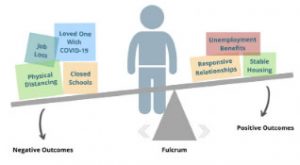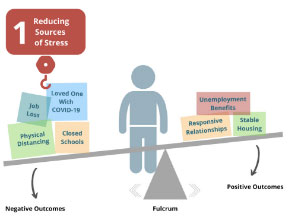Developing Emotional Resilience to Thrive
To be emotionally resilient means to be able to ‘spring back’ into shape after going through difficult and stressful times in one’s life. Stressed people experience a flood of powerful negative emotions which may include anger, anxiety, and depression and remain trapped in these, long after the stressful events that caused them have passed. Emotionally resilient people, on the other hand, are quickly able to bounce back to their normal emotional state.
People who are emotionally resilient possess a specific set of attitudes about their role in the world, that motivates them and enables them to cope more efficiently and effectively when compared with their non-resilient peers.
Specifically, emotionally resilient people tend to:
- Have realistic and attainable expectations and goals.
- Show good judgment and problem-solving skills.
- Be persistent and determined.
- Be responsible and thoughtful rather than impulsive.
- Be effective communicators with good people skills.
- Learn from past experience so as to not repeat mistakes.
- Be empathetic toward other people (caring how others around them are feeling).
- Have a social conscience (caring about the welfare of others).
- Feel good about themselves as a person.
- Feel like they are in control of their lives.
- Be optimistic rather than pessimistic.
Building Emotional Resilience during Pandemic
People with emotional awareness understand what they’re feeling and why. They also understand the feelings of others better because they are more in touch with their own inner life. This type of emotional understanding allows people to respond appropriately to others and to better regulate and cope with difficult emotions such as anger or fear.There are steps you can take to improve your resilience. These include:
- Build connections with other people – Prioritize your relationships and reach out to others by joining community-based groups in your area.
- Manage your thoughts – Work on maintaining a hopeful outlook and accept that change and setbacks are part of life. The important thing is to keep working toward your goals.
- Take care of yourself – Foster wellness by taking care of your mind and body. Eat well, stay physically active, and avoid unhealthy coping mechanisms.
- Sense of Humour – Laugh at life’s difficulties. This can shifts one’s perspective from seeing things as a threat to seeing them as a challenge, and this alters how the body reacts to stress.
How resilience can help us come out of COVID -19 Pandemic???

The point where the scale balances is called the “fulcrum,” and if it is more to one side or the other, it can make it harder or easier to tip the resilience scale to the positive. Everyone’s fulcrum is in a different spot—which explains why each person is different in how easily we can counterbalance hardships in life. The good news is that the fulcrum can be moved by developing a toolkit of skills you can use to adapt and find solutions.
So, what can we do to build up and strengthen resilience right now during the COVID-19 outbreak? And how can we build resilience to plan ahead for future times of crisis?
The science of child development points to three ways we can affect experiences and the balance of the resilience scale:
1. Unload the Negative Side

- Helping families meet basic needs like food, shelter, health care, child care, and internet access or connecting them with programs that can help
- Creating and providing children’s activity kits that include things like colouring books, crayons and markers, word searches, puzzles, books, craft supplies, etc. to give parents and caregivers a break, even for a few minutes at a time
- Encouraging parents, program staff, and co-workers to practice self-care.
Load Up the Positive Side

- If you work with families, you’ve likely already found new ways to check in with them while in-person visits aren’t possible—via phone calls or video chats, for example. The limitations of these alternatives may be a little frustrating, but remember that you’re not just checking in; you’re also providing parents with time to engage in a responsive relationship with a trusted adult during a time of physical isolation.
- Maintain and encourage connections with family and friends. Even though we’re all required to maintain physical distance, it’s important to call, video chat, email, or write letters to the people we care about to engage in responsive interactions, protect our emotional well-being, and manage the stress of living through this challenging time.
- Children’s development doesn’t pause during a crisis—and supporting that development and building resilience doesn’t have to take a lot of extra time or effort. Back-and-forth “serve and return” interactions are simple and free, and you can do them during ordinary moments throughout the day. Playing with a child is a great way to engage in serve and return—and relieve some stress for all! (See this how-to video and step-by-step guide for more examples of serve and return.)
3. Move the Fulcrum

- Sending or signing up for text reminders of important appointments
- Using tools such as grocery list apps, menu planners, and daily schedules (and posting them for the whole family to see)
- Creating step-by-step checklists for accessing relief funds and filling out important applications
During a crisis like the COVID-19 outbreak, families need their immediate, basic needs met before they can focus on anything else. But, when the crisis is over, longer-term programs that support adults and children in building and practicing their core life skills will again be necessary and effective.

Principal
Horizon Academy
Nashik
